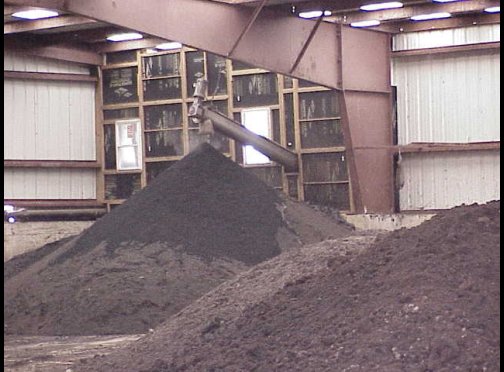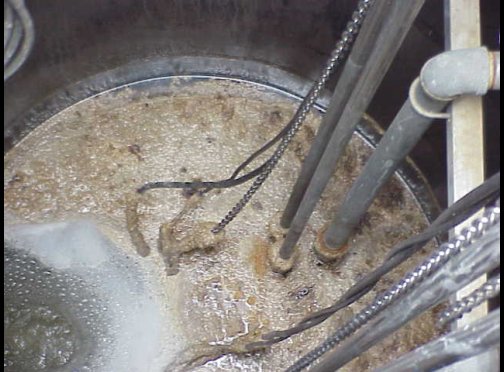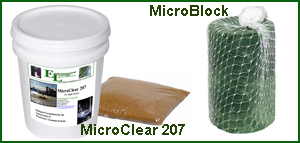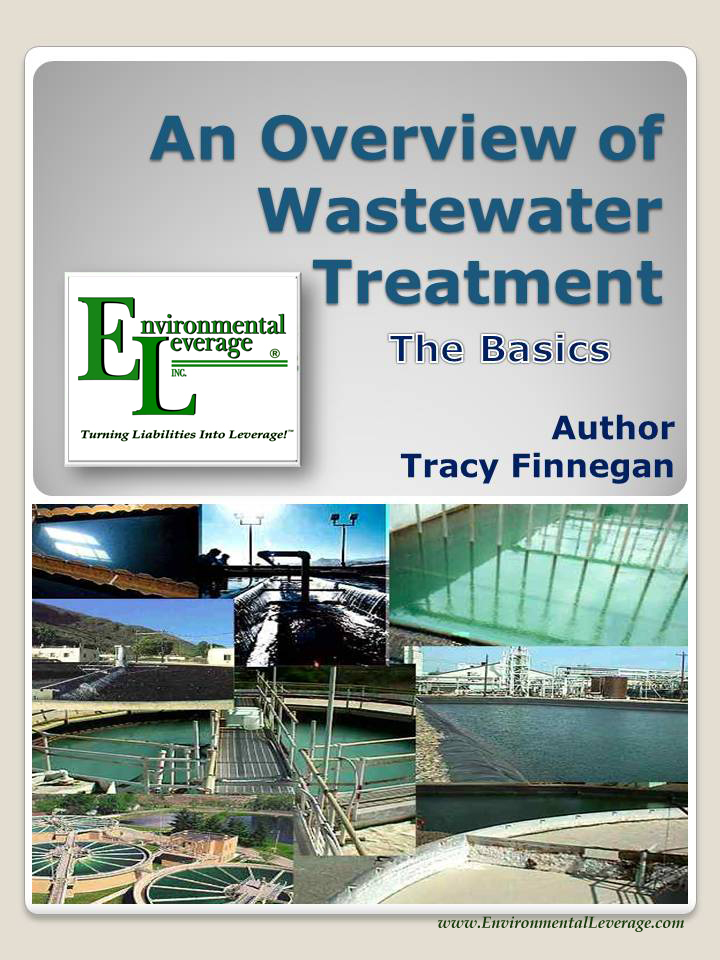Biological Products:
Bioaugmentation products for Wastewater applications in Papermills, Refineries, Chemical, Tanneries, Municipalities, Textiles, Steel, Agriculture, Animal feedlot, Gun Powder plant, Food and Beverage- Dairy Products, Orange Juice factory, Wineries, Cookie factory, Vegetable processing plant, Meat packing, Barbecue Restaurant, Aquaculture, Ornamental Ponds for algae control, CAFO, Nursing homes, Military, Campgrounds, Universities, Regulatory agencies
Lab Services:
Filamentous Identification Lab Service. One reason to identify filaments is to determine the filaments characteristics and then determine the type present. If the type is found out, a root cause can usually be associated with a particular filament. If the cause is known, then a correction can be made to alleviate problems. Chlorination is only a quick fix. Without process changes, filaments will grow back after chlorination. Wastewater Biomass Analyses and Cooling Tower Analyses also available
Training Materials:
Training is an integral part of any job. Not everyone is at the same level of training. Many people want beginning concepts and basics. Some need technical information or troubleshooting. Some want equipment, technology or process information. We have developed a full set of Basic training, Advanced training, Filamentous Identification the Easy Way as well as custom training CD's Manuals. We also provide hands-on training classes and soon will have an Online "E-University".
Audits and Consulting:
At Environmental Leverage® Inc., we have a team of experienced individuals who come into your plant with a fresh pair of eyes. The system is checked from influent to effluent. System optimization, equipment efficiency and operational excellence are key components explored. Key Benefits Equipment efficiency Total Cost of Operation reductions Reliability and safety An onsite audit is conducted to examine system parameters, process controls, and current monitor and control procedures. A physical walk-through is conducted, process flow diagrams are examined, previous design criteria are examined and current standard operating procedures are evaluated along with data logs.
|
Municipal Wastewater TreatmentWhat's New!
We have just added "Virtual Audits" to our capabilities. Check out our new Services. We are in the process of developing new courses for our ""Online E-University" in order to meet the needs of our global customers that cannot travel to our public classes.Visit our new website www.WastewaterElearning.com/Elearning
Municipalities have numerous wastewater issues. Even though it may appear that they have a steady influent, they do have fluctuations. Rain can cause huge hydraulic overloads to a plant as well as wash down grease from the collection system.
Temperature has a big impact on municipalities.
Industries that discharge to municipalities can causes overloads in BOD and TSS. Grease removal or FOG problems, by using bacterial products can not only clean out your lift stations and reduce costly maintenance problems, but it also helps reduce jetting out the lines, and additional grease loading and filamentous problems with Nocardia and Microthrix at your wastewater treatment plant.
Nitrification can be a big problem. An overall nitrogen balance is recommended. Just because the EPA does not make certain tests required, does not mean that they should be performed for process control and optimization. Learn more . . . .. .
Oil and Grease- What is it and how to get rid of it Bioaugmentation at Municipalities Collections systems and Lift stations EPA Office of Compliance Sector Notebook Project, Municipalities. More information can be obtained on the EPA website http://es.epa.gov/oeca/sector or
by
contacting Environmental Leverage
Two of the largest costs at a typical wastewater treatment plant are
electricity and solids handling.
Ask for training on Solids Handling and cost reductions.
How do you know if you just have too high a MLSS vs.
filamentous bulking?
Run a normal settleometer with the MLSS- Run a second one along side with
50/50 diluted with normal tap water. If the second one does not cut the rate
of settling by half during the 30 minute settling time period, chances are
that you have filamentous bulking.
See our additional training sections on Filaments- knowing the causes of the filaments will help you determine what type of proper process controls to change.
Click on this link for MicroBlock Solid to remove FOG in your liftstations and wetwells.
Watch what color the foam is on your aeration tank if you have one. A change from brown, to light brown to a crisp white foam can indicate a recent surge in BOD loading and can significantly impact your treatment process. Change your wasting rates or RAS or adjust with the use of bioaugmentation to try to catch up with the F/M loading.
Did you know most biosolids can be land applied and have significant nutrient value. This can reduce the cost on N and P to the farmer by 30-50% depending upon the values measured in the cake solids and the crop nutrient requirements.
Click the link below for More Antifoam Information.
Antifoams- Basic information and when not to use.
More Information On
Grease Below: 5 Collection
systems troubleshooting for Grease and oil 7 Grease and Oil
or FOG in
Municipalities and Industrial Facilities
Wastewater Lift stations-
Grease and Septicity
Microthrix foaming at a municipality
Nocardia foaming
MicroClear 207 is a powdered product that was developed for use in the
biological wastewater treatment of greases, fats and oils. This
product helps digest the fats, oils and grease that can cause problems with
foaming and filamentous bacteria. This product can be used in liftstations
as well as your WWTP, to control grease problems.
Wastewater Training Options The greatest equipment and the most efficient, dedicated workers can be
ineffective if they are not properly trained. At Environmental Leverage, we
have years of experience in many process areas and technical expertise on
equipment, systems and operations. Programs to optimize your system or
custom training can be tailored to increase the reliability and efficiency
of your plant.
Look
for self taught training materials and training courses below.
We have developed a full line of Training CD's and Elearning classes for training and operator CEU's.
Elearning and General Brochure Click for brochure Online Wastewater Training ELearning -Since wastewater training is such an integral part of any treatment system, we have been asked
to develop an online waste water training program with some of our materials.
Click here and Go straight to our WebSite - www.WastewaterELearning.com Take a sneak peek inside our training courses with our ELearning Demo Make sure to create an account and log in. Lab Poster
Environmental Leverage Lab Poster for Wastewater Training. This Microbiology Poster has photos as well as descriptions and troubleshooting recommendations of common micro organisms found in most wastewater treatment plants.
Contact Environmental Leverage for more
information about obtaining this poster for your lab or setting up hands on
training, consulting and onsite audits.
Click on this sentence link for MicroClear 207 FOG removal.
Audits and Onsite Training and Consulting In order to "Audit" or Troubleshoot a municipal wastewater treatment plant, a number of things need to be looked at. A physical walk-through of the plant needs to be conducted with visual observations noted. A microscopic analyses of the Biological portion of the waste treatment system needs to be conducted. Settleometer Testing needs to be conducted. A sludge judge should be used on a Clarifier Examination of lab data- current testing procedures and results Walk through and correlation of process side to wastewater treatment plant operations. A fully detailed final report is issued with process recommendations, system changes, areas for optimization and increased efficiency.
For a full onsite audit of your plant- Contact Environmental Leverage inc. 630-906-9791 1 More troubleshooting for municipal plants:
2
Troubleshooting Lagoon Systems 3 Click this sentence: Sign up to receive our Monthly Email Newsletter & be ahead of the curve!
Bioaugmentation for reduction of BOD and TSS MicroClear 201 is a powdered product that was developed for use in the biological wastewater treatment plants. Wastewater in the Fall- Problems and Solutions Beneficial Reuse Lagoons-Winter BOD issues and bioaugmentation Learn how Environmental Leverage can help your plant Bioaugmentation in Collection systems can impact on BOD and TSS downstream at the wwtp. Filamentous bacteria can be a problem is solids are held too long in a clarifier also.
Oh no all my bugs are dead
Case History : Municipal Foaming and Nocardia
We started working with a municipality that had a history of foaming
problems and Nocardia for years. They already were on a biological program.
We came in, audited the plant, made some process recommendations, changed
the program to a dual program. You can see solids build-up in the
clarifier and the scum box is filled. The photo on the right is the thick
Nocardia foam in the aeration basins. For the first time the plant has actually seen MLSS in the aeration
basins!
You can see the surface of the aeration basin, normal mlss and the scum box
now only has a small amount of scum. This plant will have to fight grease and foaming continually until it has
an upgrade to the system, since it does not have prescreening to remove some
of the grease and solids that do come in to normal municipal systems.
Optimization of the primary, changes to the solids handling in the clarifier
and a minor adjustment to the bacterial program will help to keep the plant
running more smoothly though in the meantime!
Total System Optimization- Case History Lab Testing and Troubleshooting Newsletter More to come . . . . .
|

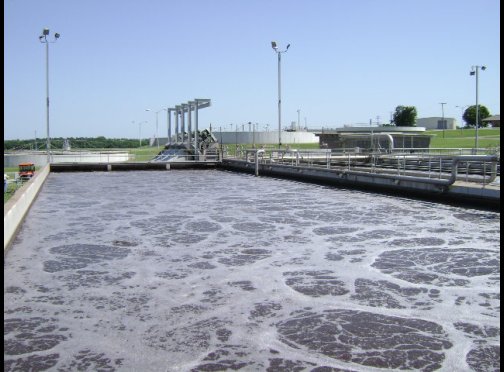
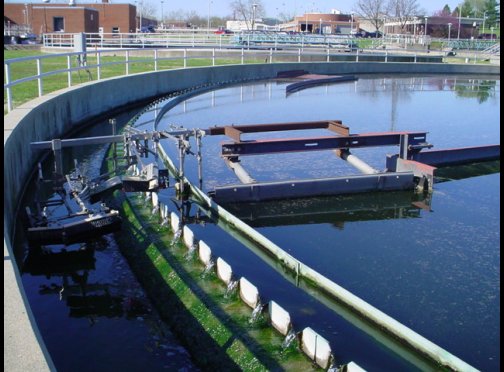 Clarifier optimization can impact the RAS and solids that not only are
returned to the front of the plant, but what condition the sludge is in that
is sent on to dewatering. Ask about our
Clarifier Optimization training.
Clarifier optimization can impact the RAS and solids that not only are
returned to the front of the plant, but what condition the sludge is in that
is sent on to dewatering. Ask about our
Clarifier Optimization training. There are tons of files containing information on every subject from A to
Z on the internet with standards, benchmarks and industry BMP's. The
problems is, who has time to dig and find it all. It is not always in easy
to find places. We have tried to show you some of the ones we though
might be useful. There are links to the places where we found some of them
in case you want to dig deeper on a particular subject and find out more.
There are tons of files containing information on every subject from A to
Z on the internet with standards, benchmarks and industry BMP's. The
problems is, who has time to dig and find it all. It is not always in easy
to find places. We have tried to show you some of the ones we though
might be useful. There are links to the places where we found some of them
in case you want to dig deeper on a particular subject and find out more.
